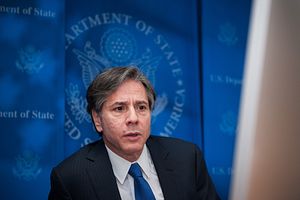A few curated defense and security links to kick off your week:
South China Sea = Ukraine? In a statement unlikely to win the United States favor in China, U.S. Deputy Secretary of State Antony Blinken, speaking at a conference organized by the Center for a New American Security in Washington, D.C., compared China’s actions in the South China Sea to Russia’s actions in Ukraine. Blinken specifically framed both situations as “efforts to unilaterally and coercively change the status quo.” Relations between the United States and Russia stand at a post-Cold War low today after Russia annexed the Crimean peninsula for Ukraine early last year. As Andrew Chubb noted recently in The Diplomat, the “status quo” is a tricky concept when discussing the South China Sea and means very different things to different parties.
Win the Spratlys, Win Taiwan? Over at Defense News, a report takes a look at how China’s goals in Taiwan are driving its land reclamation and construction work on various Spratly features. A Taiwan invasion scenario remains the People’s Liberation Army’s primary war-fighting scenario, as China’s latest defense white paper alluded to. As one expert, Ian Easton, noted in the report, “The Taiwan invasion scenario drives all Chinese military planning, force modernization, exercises and training, and this includes the recent land reclamation projects in the South China Sea.”
A tank revolution in India. The Indian Army’s release of a global request for information (RFI) for a new multi-purpose Future Ready Combat Vehicle (FRCV) to replace its aging Soviet-era main-battle tanks (MBTs) has thrown the future of its indigenously designed Arjun tank into doubt. The Diplomat‘s Franz-Stefan Gady took a look at the fate of India’s Arjun tank recently, noting that “The recent RFI could also very well ring the final death-knell for India’s indigenously developed third generation Arjun MK-I main battle tank – a poorly designed vehicle (e.g., too much heavy armor versus too little horsepower) that encountered repeated delays due to a flawed procurement and testing process.”
Race to a deal. Little remains certain about the Iran nuclear deal except the fact that we won’t be seeing a final agreement by the purported deadline of June 30. Expect an announcement in the first week of July. Negotiators continue to hammer out details and commit to paper the terms of the April 2 Lausanne framework agreement. Major differences remain between the two sides and the stakes are high.
ICYMI. A few recent popular articles in The Diplomat that may be of interest: Gabe Collins breaks down the cost of one of China’s Type 054 Jiangkai-II–-class frigates, Saurav Jha writes on India’s drones, and Kunal Singh takes a look at strategic nuclear stability in South Asia.

































